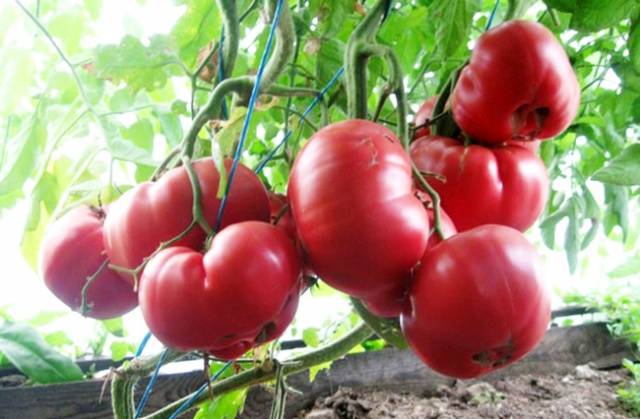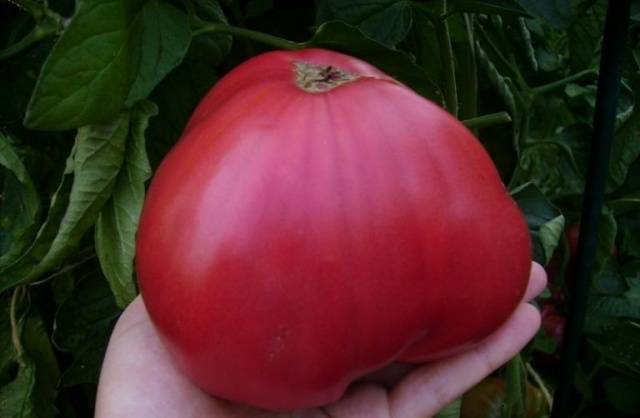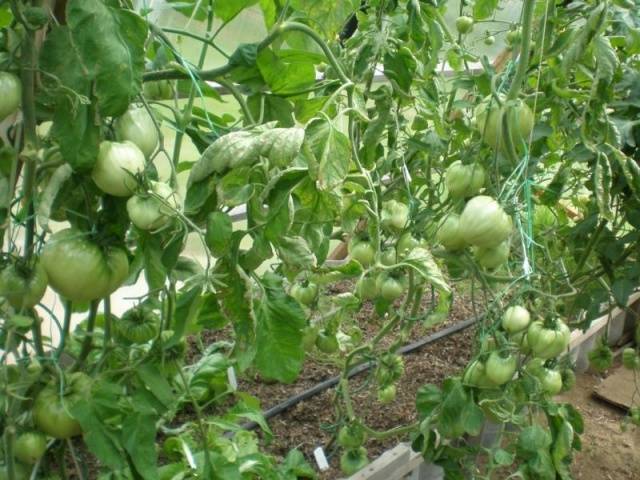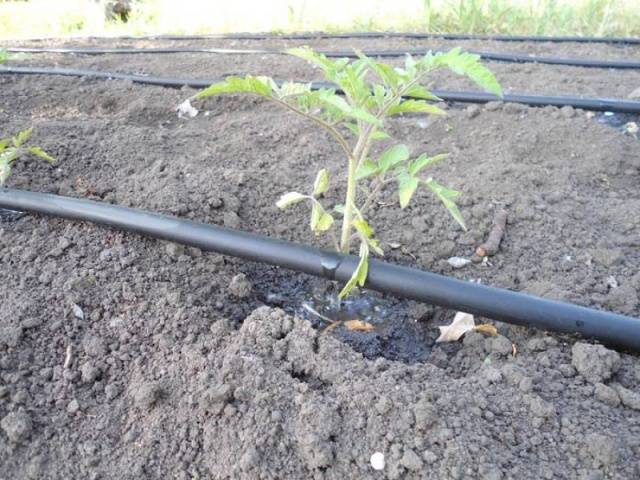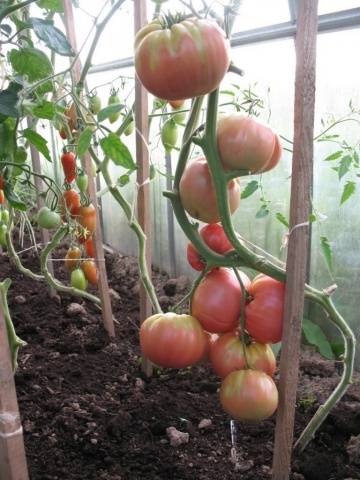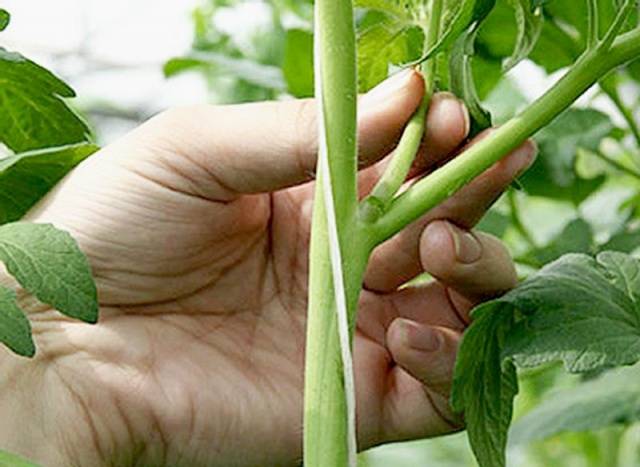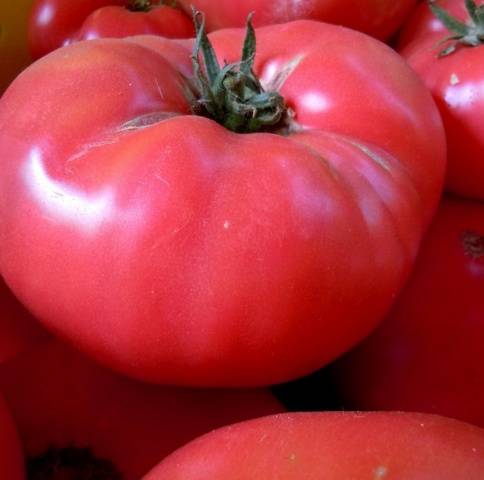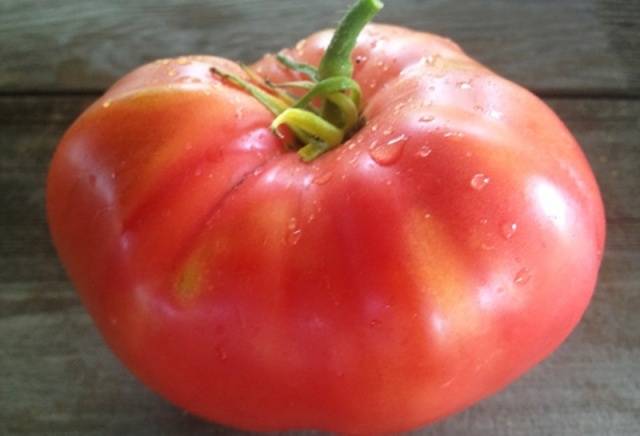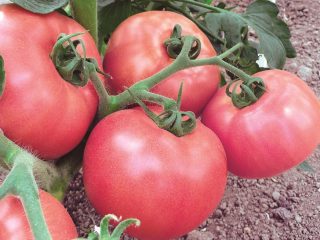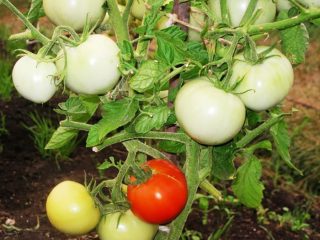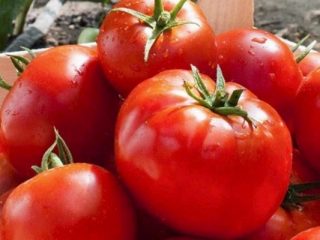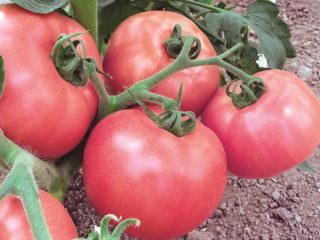Content
Tomato variety Pink honey is popular for its sweet taste, impressive size and ease of care. Below is a description of the variety, photos, reviews of the tomato Pink honey.
This variety is recommended for planting in the middle lane and in Siberia. The plant does not belong to hybrids. Therefore, it can be grown from seeds obtained from the fruits of the previous harvest.
Description of the variety
The characteristics and description of the pink honey tomato variety are as follows:
- mid-season variety;
- 3-10 ovaries are formed on the hand;
- fruit ripening period - from 111 to 115 days;
- fruiting begins in August;
- yield - up to 6 kg from each bush;
- the height of the bush in the open field - up to 70 cm, in the greenhouse - up to 1 m.
The fruits of the Pink Honey variety have the following characteristics:
- the weight of the first fruits - up to 1.5 kg;
- subsequent copies are 600-800 g;
- pink fruit;
- fleshy sweet pulp;
- there is no sourness in the taste;
- multi-chamber tomatoes (from 4 or more);
- heart-shaped fruit, slightly ribbed;
- thin skin.
Tomato Pink honey is used for making salads, tomato juice, adjika, caviar, sauces and other homemade preparations. The variety is not suitable for canning as a whole, because it has a thin skin and is too large.
Landing rules
The Pink honey variety is grown indoors: in greenhouses and greenhouses. In the southern regions, planting directly into open ground is allowed. No more than three plants are planted on one square meter of soil.
It is preliminarily recommended to get seedlings that can be transferred to a greenhouse or to open-air beds.
Outdoor cultivation
Planting tomato seeds in open ground is done after warming up the soil and air. It is recommended to start preparing the beds in the fall. They are dug up and fertilized: compost, humus, ash, superphosphate, potassium sulfate.
For planting, they choose places where legumes, cabbage, zucchini, cucumbers, onions, pumpkin previously grew. If peppers, eggplants or potatoes grew in the garden, then it is not recommended to use it for tomatoes, since these crops have similar diseases.
Tomato seeds Pink honey is planted in holes 30 cm in diameter and 5 cm deep. 3-5 seeds are placed in each hole. After germination, the strongest plants are selected, the rest of the shoots are weeded. The planting material must be sprinkled with earth and watered abundantly.
Growing in a greenhouse
Indoors, tomatoes are grown by the seedling method. The soil in the greenhouse is dug up in the fall. Be sure to use fertilizers in the form of humus and ash.
Tomato seeds are soaked for a day, after which they are placed in containers filled with earth, peat, humus and humus. The approximate timing of planting is from mid-February to mid-March.
When the first shoots appear, the seedlings are transferred to a sunny place. Tomatoes are periodically sprayed with warm water. Plants can be planted in a permanent place at the age of 1.5 months.
Variety care
The Pink Honey variety requires standard care, which includes watering and feeding. The intensity of watering depends on the stage of development of the tomatoes.As the plants grow, it is necessary to carry out pinching and tying the bushes. Additionally, you need to promptly eliminate weeds and mulch the soil with straw or sawdust.
Watering tomatoes
Tomato Pink honey requires moderate watering to keep the soil 90% moist. However, excess moisture leads to the development of fungal diseases, the fall of ovaries and fruits.
Tomatoes Pink honey are watered according to a certain scheme:
- After transferring to a permanent place, the seedlings are watered abundantly (4 liters per plant).
- The next watering is done after 10 days.
- Tomatoes need moisture twice a week before flowering. Each bush will require 2 liters of water.
- During the flowering period, tomatoes are watered every week, and up to 5 liters of water are added under the bush.
- When the first fruits appear, the plants are watered twice a week, reducing the volume of water.
- When the tomatoes start to turn red, water once a week. Excess moisture during this period provokes cracking of the fruit.
Tomatoes are watered in the morning or evening when the heat subsides. The water temperature should be 20 degrees or more. When watering, you must avoid getting moisture on the leaves of plants so as not to provoke their burn.
Fertilization
By applying fertilizers, you can increase the yield and improve the taste of tomatoes. In total, several dressings are carried out:
- 14 days after transferring the seedlings to a permanent place.
- Before flowering.
- With the formation of ovaries.
- During the period of active fruiting.
Tomatoes are fertilized with solutions based on phosphorus and potassium. Phosphorus contributes to the development of the root system. It is introduced by dissolving superphosphate in water and watering the plants.
Potassium improves the palatability of fruits and strengthens plant immunity. It is allowed to use complex fertilizers containing the required proportions of minerals.
Ash is a universal fertilizer for tomatoes. It is prepared by combining 1 glass of ash and 10 liters of water. The resulting mixture is poured over the plants.
During the flowering period, you can spray the tomatoes with boron. 1 g of the substance is added per liter of water, after which sheet processing is carried out. Just one or two such dressings are enough.
Stepson and tying
As follows from the characteristics and description, the pink honey tomato variety needs pinching, which allows you to eliminate the lateral shoots on the plant stem. Such shoots require a large amount of nutrients, which negatively affects the yield of tomatoes.
The first stepchildren are eliminated under a flower brush. Its length should not exceed 5 cm. Work is carried out in the morning in dry and warm weather. The formation of the bush takes place in two stems.
Tomatoes are tied to a peg, which is driven into the ground. After fixing on a support, the bush is able to withstand a large number of fruits, it does not break and grows straight. In the open field, tying increases the resistance of plants to rain and wind.
Protection against diseases and pests
Good care will help protect tomatoes from pests and diseases. When signs of fungal diseases appear, plants are treated with fungicides (Ridomil). Effective insecticides have been developed against insect infestations.
Under unfavorable conditions (high humidity, lack of ventilation, low temperature, too dense plantings), the likelihood of the spread of late blight, gray rot and other diseases increases significantly.
Gardeners reviews
Conclusion
The variety Pink honey is distinguished by its excellent taste and high fruit weight. Tomatoes are grown in greenhouses and hotbeds, if weather conditions permit, then in the open field.
For normal development, plants require regular care, which consists of watering, feeding and pinching. The introduction of potash fertilizers, the elimination of thickening and airing the greenhouse will help to increase the resistance of tomatoes to diseases.
